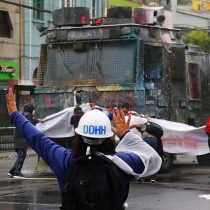
While the discussion on the importance of human rights at the global level spans around 72 years, with its origins at the end of World War II, its debate on the implementation of educational programmes is much more recent, placing itself on the agenda around 1993 at the World CONFERENCE of HRDs in Vienna and strengthening in 2005 on the World Programme in HRD.
Human rights education, however, does not take centre stage until 2011 – on the Resolution for the United Nations Declaration on Human Rights Education and Training adopted by the United Nations General Assembly in December of the same year (which the State of Chile has ratified) – since the main objective of the incorporation into the school curriculum in this area is to provide citizens with citizenship , from an ever-younger age, a set of guiding principles to understand the scope of their rights, duties, how to exercise them, and of course, when they are violated and the processes for healing abuses thereof.
However, the initial spirit of the Resolution in question, has applied only partially in our country, this because its incorporation into the chair of citizen training – regarding the recent implementation in the educational training program for third and fourth media – does not allow to develop an in-depth analysis of human rights beyond a content “past and taken for granted” , this is among other things because it is contemplated as one of the many topics that encompasses the citizen training sector, the latter being the most critical point and that exposes the need for a specialized sector during the training of girls, boys and adolescents.
In this sense, the positions of both national and international agencies (National Institute of Human Rights, Amnesty International, United Nations, among others), have delivered cross-cutting guidelines for the implementation of a full human rights programme in the education system, which is essentially concerned with intervention not only in secondary education, but also in basic education – of course adapting the contents to the most appropriate form of education according to the age of the and students – favoring a high understanding of HRDs, as they progress in their different educational stages.
In addition, to emphasize that the approaches with which HRDs are to be taught must multiply the fruits of learning by promoting educational teaching and methodology, based on girls and boys, in which they are expected to participate both as part of an empowerment and knowledge of their rights, as well as the promotion of the democratic values that they will be able to exercise throughout their adult life.
The content poured into this opinion column is the sole responsibility of its author, and does not necessarily reflect the editorial line or position of El Mostrador.





